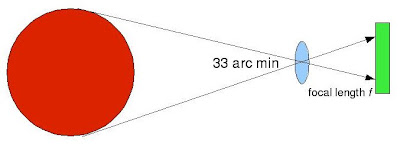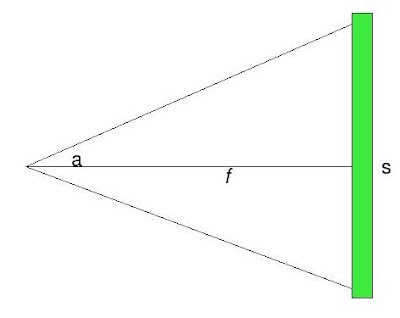
Of course, it's not on scale, but anyway. Now, suppose we have a lens of focal length f and with simple trigonometry, we can find the image of the sun on the CCD.

Angle a equals to 33 arc minutes as its vertically opposite angle shown in the first diagram. So, the image size s on the CCD is can be found by solving:-
tangent (a/2) = (s/2) / f
So, let's plug in the figures, for example, the image size of the solar disc on the CCD, with my Borg 45ED II which has 325mm focal length:-
tangent (33 arc minute / 2) = (s/2) / 325
s = 3.1198mm
It's pretty small, right? What's the size in terms of pixel? For example, my DMK31AF03 has 4.65um pixels, and thus, the solar disc will cover:
3.1198mm / 4.65um = 670.9 pixels
i.e. the full size solar image will be 670.9 in size at prime focus. With a 2x barlows, it will become 1341.8 pixels.
No comments:
Post a Comment